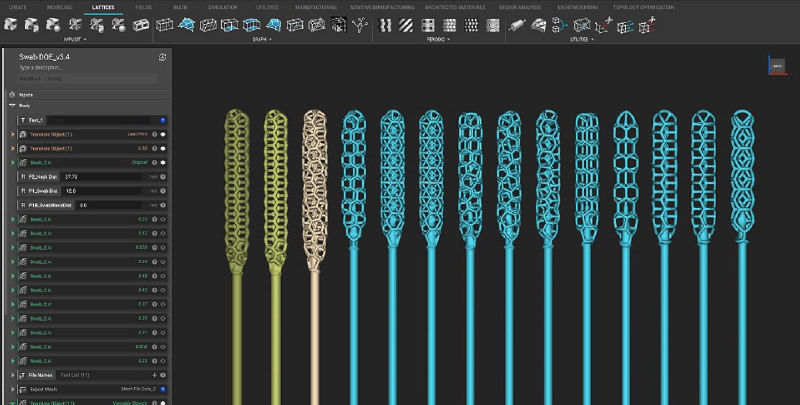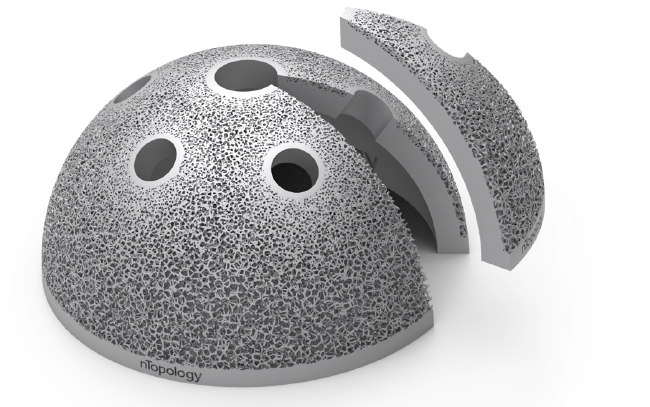Disruptions in the traditional manufacturing supply chains made the world realize the benefits of additive manufacturing. In this article, we focus on the development of this practice and the diverse ways it has been applied in the medical industry—from COVID-19 swabs to orthopedic implants.
Why 3-D Printing?
3-D printing has been used to make everything from jet turbines to flip flops, but 2020 showed that its potential in the medical field could have an enormous and immediate impact to help millions. We’ve already seen 3-D printing take the world by storm, as it is being used for anatomical models, dentistry, patient specific implants and prosthetics, and much more.
What sets 3-D printing apart from other manufacturing methods is the extremely complex and functional designs that can be manufactured and which cannot be created using traditional manufacturing methods. Additive manufacturing offers a solution naturally suited to generate organic shapes found in the body or nature, at a lower cost and a faster pace.
Take for example, the recent spike in demand for COVID-19 swabs. Overnight, the world had a need for one very specific product. We immediately teamed up with one of our partners to rapidly design and manufacture swabs with production goals to produce more than a million swabs per week using additive manufacturing.
With no former products of this nature in production, it was critical to test multiple design solutions to find the best possible swab design in the least amount of time. Initial designs and prints were turned around in one hour, with further revisions and design iterations being made the same day. The final design featured a lattice structure that allowed for effective sample collection. The result? In the spring of 2020, the final swab design was approved as an FDA Class 1 Exempt Device, and a single 8- hour-long print could produce 1,500 swabs. Production capacity was brought online to be able to make one million swabs a week to meet the growing demand.

A Brief History of Additive Implants
The idea of using metal additive manufacturing technologies to produce orthopedic implants is not a new concept. In fact, the first additive hip cup that featured lattice structures to promote osseointegration was implanted in a patient in 2007. 3-D printed medical devices became the flavor of the past decade. The race was on for who would be the first device company to market with a cool new design using this hot new process.
Fast forward to today, most established medical device companies offer at least some products that were produced with additive manufacturing.

The potential impact of additive manufacturing in the orthopedic industry is obvious. Numerous studies have shown that AM implants can greatly accelerate patient rehabilitation and bone growth. Also, the capabilities of the technology to produce custom devices on-demand, at an economically viable price point, and in a short time frame are unmatched. However, there are some roadblocks that need to be overcome before AM implants become the norm.
Until recently, the main caveat was the lack of regulations. The technology was quickly outpacing agencies working to manage them. Authorities, like the FDA, were scrambling to determine what the exact rules should be in both a proper and safe manner. It wasn’t until the tail end of 2017 that the FDA released its final version of the guidance document, “Technical Considerations for Additive Manufactured Medical Devices”. And in Europe, the uncertainty caused by the release of new standards in early 2020 caused many established companies to tone down their activities in the area.
Fast forward to today where we now have stronger standards in place, we’re seeing a new hurdle holding the industry back. The submission process is a bit more understood, as quite a few additive orthopedic devices have received clearance. Yet, the journey to get there, to scale these premium medical offerings is at a plateau. Without engineering design software that supports the design, documentation and traceability of new medical devices with osseointegrative lattice structures, we’re slowing the volume of production and limiting the amount of people that 3-D printed orthopedic devices can help.
Current Challenges in New Product Development
There are three major design challenges related to software in developing implantable orthopedic devices for additive manufacturing.
- Designing complex features and lattices
- Developing workflows that ensure traceability
- Applying the proprietary lattices to a whole product family
The number one priority for every design project in this field is time—whether your goal is to be first to market or you’re working with a surgeon to save a patient’s life. Ensuring that you can check all these boxes in as short of a time frame as possible is essential.
Fortunately, new software offerings are starting to chip away at these roadblocks for progress. Better engineering platforms are offering speeds up to 6 to 10 times faster to design and prepare a solution for manufacturing. This obvious speed advantage not only allows companies to complete the project faster, but it also delivers much better product testing iteration runs to ensure the implant will be durable and effective.
Removing Bottlenecks in Product Development
In the past few years, we have seen the additive orthopedics implant industry coming to an age. The additive manufacturing systems are now mature and the regulators are catching up with the advancements of the technology. The tools are there and the rules are set. What will separate the winners in this race is how fast they can move. Advanced design software and design automation can give many that edge. Ultimately, the real winners of this race will be the patients whose lives are going to greatly improve from this innovation.








